Vanuatu Flag Meaning
Red and green horizontal bands separated by a black stripe edged in yellow, with a yellow Y-shape extending from the hoist containing a boar's tusk and two crossed fern leaves, representing the blood of sacrifice, the rich soil, the Melanesian people, enlightenment, and traditional Melanesian values and culture.
- Continent
- Oceania
- Adopted
- 1980
- Ratio
- 3:5
- Colors
- red, black, green, yellow
- Designer
- Kalontas Malon
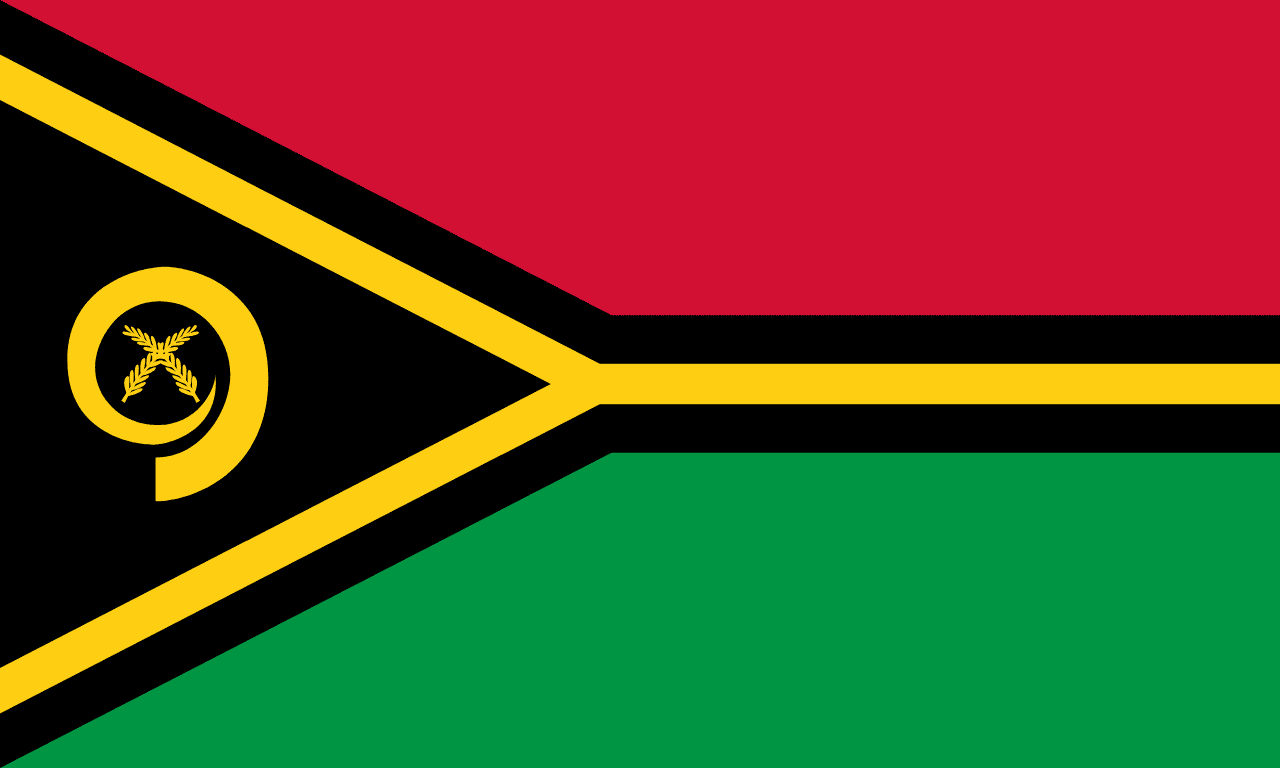
Symbolism
Red Band: Represents the blood shed for independence and the sacrifices made by the people of Vanuatu in their struggle for freedom, as well as the unity and strength that binds the nation together.
Green Band: Represents the rich, fertile land of Vanuatu and its lush tropical vegetation, symbolizing the agricultural wealth and natural beauty of the volcanic islands that sustain the population.
Black Stripe with Yellow Borders: Represents the Melanesian people of Vanuatu and their skin color, bordered by yellow that symbolizes enlightenment, Christianity, and the bright future of the nation.
Yellow Y-Shape: Represents the archipelago's island chain formation and the Christian light spreading throughout the islands, with the Y-shape symbolizing the way the islands are scattered across the Pacific Ocean.
Boar's Tusk: Represents prosperity, wealth, and traditional Melanesian culture, as boar tusks are symbols of status and achievement in customary Vanuatu society and are used in traditional ceremonies.
Crossed Fern Leaves: Represent peace and the 39 degrees that form a circle, symbolizing the traditional values of harmony and the cyclical nature of life in Melanesian culture.
History
- Pre-European Era: Melanesian peoples settled the islands around 3,000 years ago, developing diverse cultures and languages across the archipelago while maintaining trade networks and traditional governance systems.
- 1606: Portuguese explorer Pedro Fernandes de Queirós was the first European to sight the islands, claiming them for Spain, though no permanent European settlement was established for over 250 years.
- 1774: Captain James Cook explored and mapped the islands, naming them the New Hebrides after the Scottish islands, beginning sustained European contact and eventual colonial interest.
- 1860s-1880s: European missionaries, traders, and labor recruiters ('blackbirders') arrived, disrupting traditional societies and forcibly taking many islanders to work on plantations in Australia and Fiji.
- 1906: The Anglo-French Condominium was established, creating the unique situation of joint British and French colonial rule with parallel administrations, legal systems, and educational systems.
- 1940-1980: World War II brought American military presence, accelerating social change and independence movements, while the condominium's dual colonial system created political complexity and demands for self-rule.
- July 30, 1980: Vanuatu gained independence under Prime Minister Walter Lini's Vanua'aku Pati, adopting the current flag and establishing a democratic parliamentary system with both English and French influences.
- 1980s: Early independence faced challenges including the Santo Rebellion, where French settlers and local chiefs attempted secession, requiring military intervention to maintain national unity.
- 1990s-2000s: Political instability with frequent changes of government reflected ethnic and linguistic divisions, while the economy remained dependent on agriculture, tourism, and offshore financial services.
- 2015: Cyclone Pam devastated the islands, destroying infrastructure and highlighting vulnerability to climate change, while international aid supported reconstruction efforts.
- 2020-Present: The COVID-19 pandemic severely impacted tourism-dependent communities, while ongoing climate change threatens low-lying islands with sea-level rise and increasingly severe cyclones.
Trivia
- Vanuatu is home to the world's most accessible active volcano, Mount Yasur on Tanna Island, which has been erupting continuously for over 800 years and attracts tourists from around the world.
- The flag represents one of the world's most linguistically diverse countries, with over 100 indigenous languages spoken among a population of only 320,000 people.
- Vanuatu has three official languages - Bislama (pidgin), English, and French - reflecting its unique colonial history under joint British and French rule.
- The country is considered one of the happiest places on Earth according to the Happy Planet Index, ranking first multiple times due to high life satisfaction and low ecological footprint.
- Land diving on Pentecost Island is believed to be the origin of modern bungee jumping, with men diving from tall wooden towers with only vines tied to their ankles.
- The flag flies over a country that is extremely vulnerable to climate change, with rising sea levels threatening to displace entire communities from low-lying islands.
- Vanuatu's traditional economy is largely based on subsistence agriculture, with most families growing their own food including taro, yam, sweet potato, and tropical fruits.
- The country has a unique 'kastom' culture that blends traditional Melanesian practices with Christian beliefs, maintaining traditional governance systems alongside modern democracy.
- Vanuatu is located in the 'Ring of Fire' and experiences frequent earthquakes and volcanic activity, with several active volcanoes across the archipelago.
- Traditional art includes wood carving, mat weaving, and sand drawing, with the latter being recognized by UNESCO as a Masterpiece of Oral and Intangible Heritage.
- The flag represents a country where traditional shell money and ceremonial exchanges still play important roles in social relationships and cultural ceremonies.
- Vanuatu has developed a small but growing tourism industry based on its natural beauty, cultural attractions, and adventure activities like volcano tours and diving.
- The country consists of 83 islands, of which about 65 are inhabited, spread across 1,300 kilometers of the Pacific Ocean north of New Zealand.
- Traditional music and dance remain central to Vanuatu culture, with different islands having distinct musical styles and ceremonial performances.
- Despite its small size, Vanuatu plays an active role in Pacific regional politics and has been a strong advocate for climate action in international forums.
Related Countries
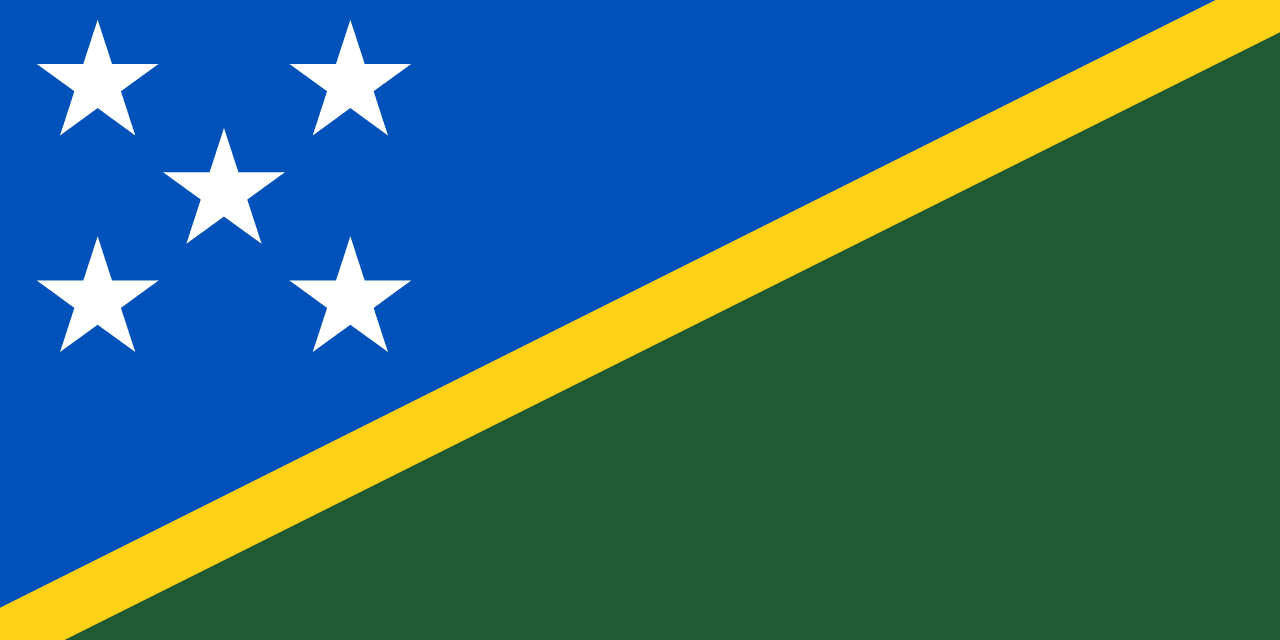
Solomon Islands
Oceania
A blue triangle in the upper hoist and green triangle in the lower fly, separated by a thin yellow diagonal stripe, with five white five-pointed stars arranged in an X pattern in the blue triangle, representing the ocean, land, sunshine, and the five main island groups of this Melanesian nation.
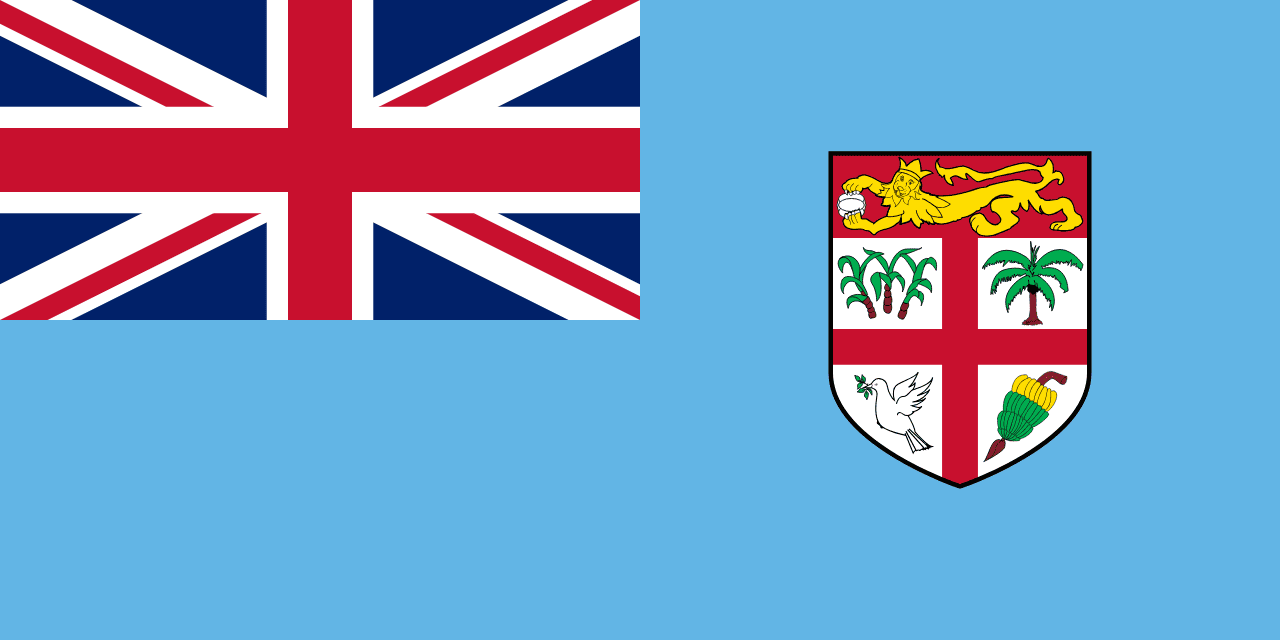
Fiji
Oceania
A light blue field with the Union Jack in the canton and Fiji's coat of arms on the fly side, representing the Pacific Ocean, British heritage, and the agricultural and maritime traditions of this island nation.
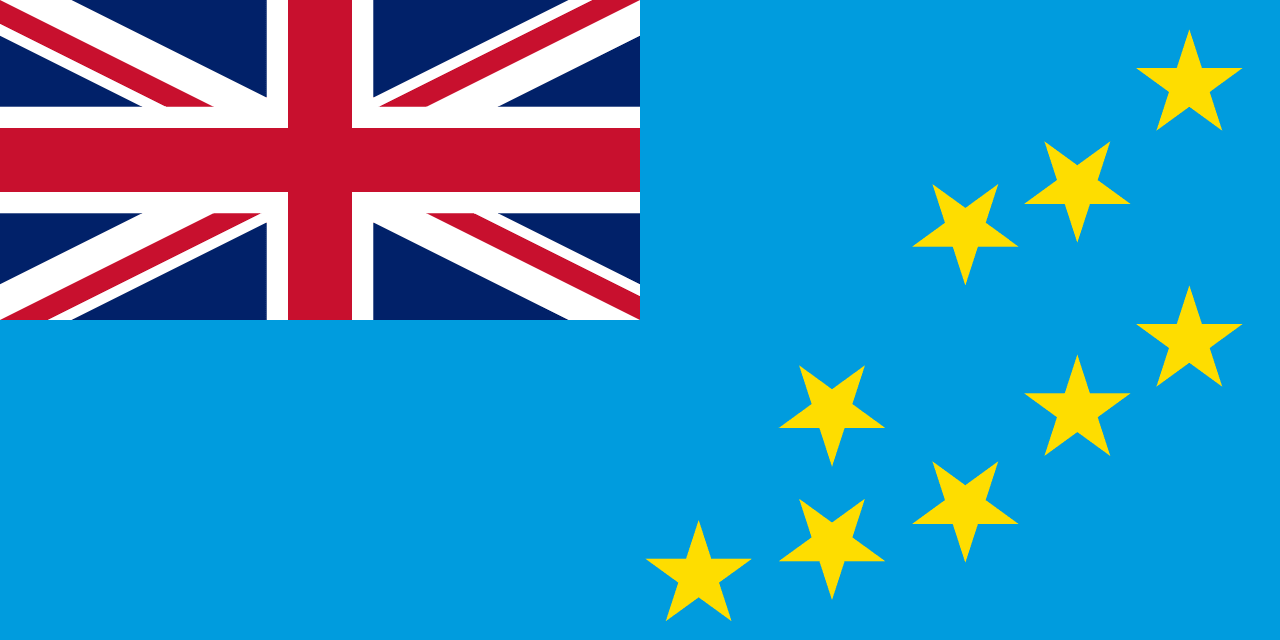
Tuvalu
Oceania
A light blue field with the Union Jack in the canton and nine yellow stars representing the nine atolls of Tuvalu, symbolizing the Pacific Ocean that surrounds the islands, the historical connection to Britain, and the geographical arrangement of the island nation in the central Pacific.
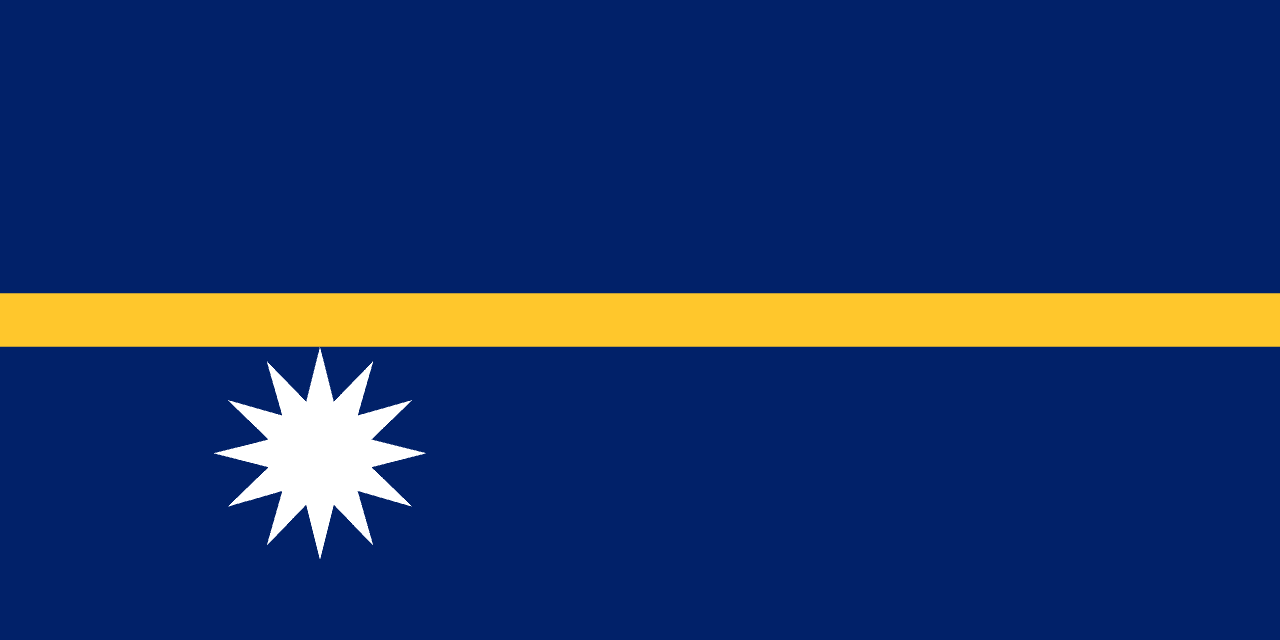
Nauru
Oceania
A blue field with a horizontal yellow stripe across the center and a white twelve-pointed star below the stripe near the hoist. The design reflects Nauru’s position just south of the equator and its cultural identity.
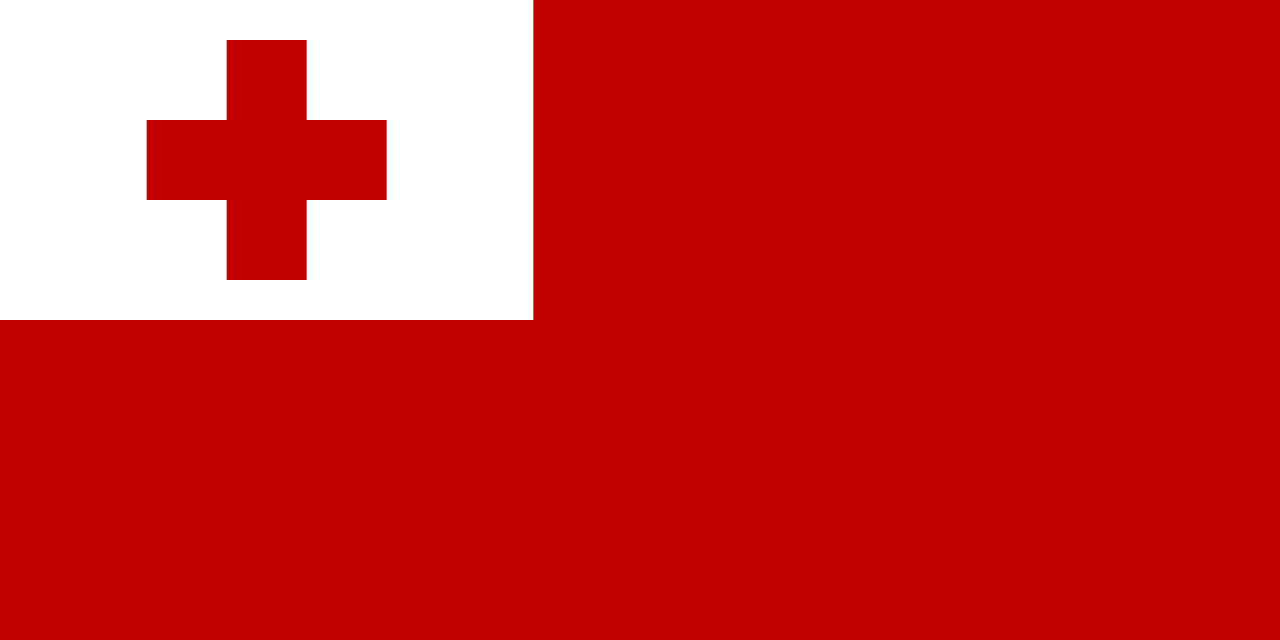
Tonga
Oceania
A red field with a white canton containing a red cross, representing the blood of Christ and the sacrifice of Jesus for mankind, the purity of Christian faith, and the deeply Christian identity of the Kingdom of Tonga as a Pacific island nation that was never colonized.
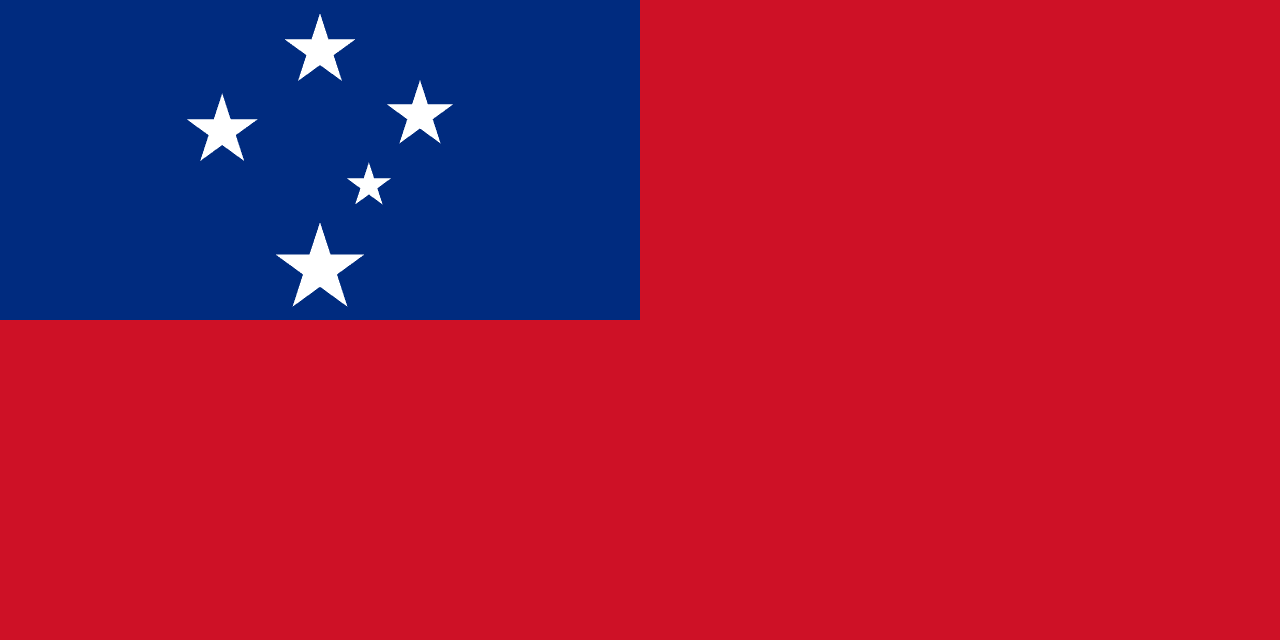
Samoa
Oceania
A red field with a blue rectangle in the upper hoist containing the Southern Cross constellation in white. The flag reflects Samoan heritage and its place in the South Pacific.